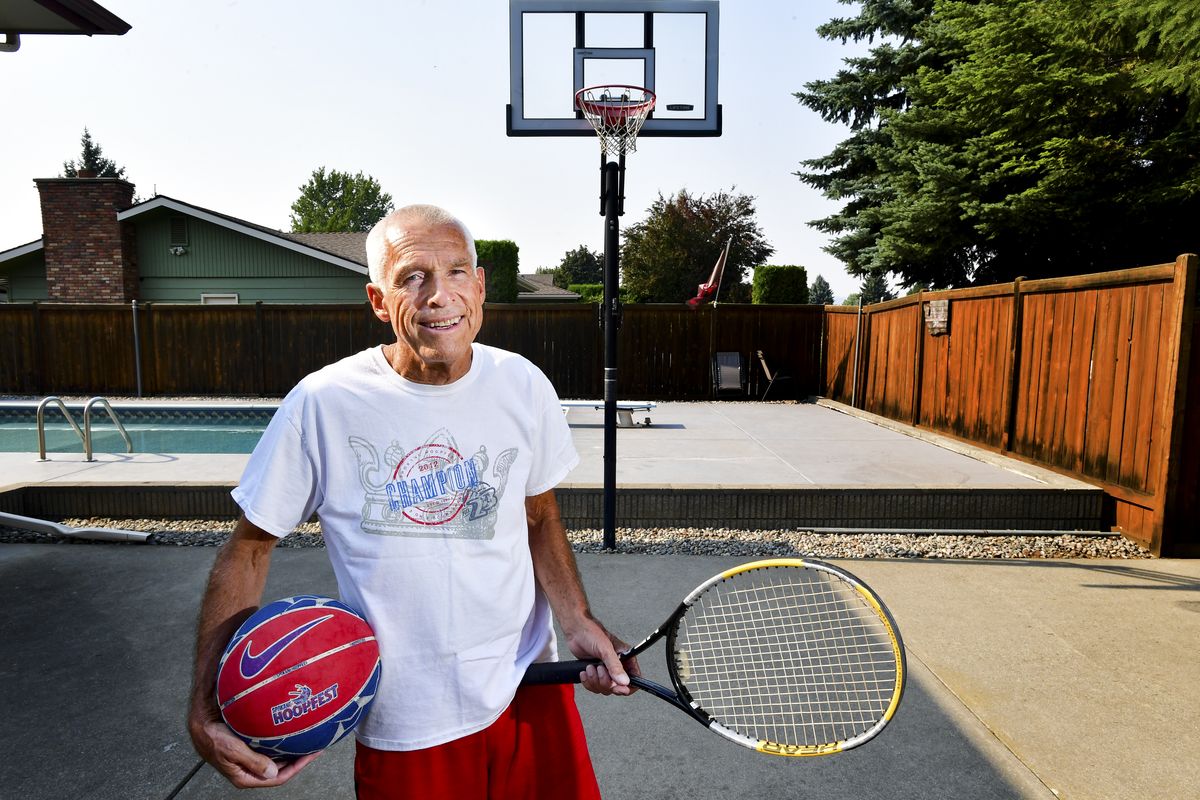Health scare doesn’t slow Jon Heimbigner

Inducted into more than a half-dozen halls of fame for his philanthropic support of area athletics, Jon Heimbigner can rest assured his legacy is firmly entrenched.
Surviving a close bout with death last November, however, made it even less likely for the 73-year-old to slow down to appreciate it.
“I’m going full bore,” Heimbigner said.
Heimbigner played on three 3-on-3 basketball teams at the Washington State Senior Games a little more than a week ago, winning championships in two age groups. Next on the agenda is competing at Hoopfest in the men’s senior division, an age group comprised of players 65 and over making its debut in the tournament this year largely thanks to Heimbigner’s ambition to see it added to the event.
An active schedule is nothing new for Heimbigner, dating to his youth growing up and playing sports in Ritzville and Odessa. He still plays tennis – “I’m in the top doubles league in Spokane,” he said – and he was waterskiing on Memorial Day weekend last year when he first encountered a headache that ultimately would persist for months.
“I thought it was weird. I never get headaches,” Heimbigner said, noting prescribed muscle relaxers didn’t resolve the issue.
In September, Heimbigner was diagnosed with shingles, and he was afflicted with Bell’s palsy a week after that, a condition that paralyzed much of his face.
“I thought, ‘What’s going on?’ ” he said. “They gave me stuff to treat that, and in a month I was over the shingles and over the Bell’s palsy, and I had no residuals from the Bell’s palsy. But at the end of October, the headaches were still there.”
Heimbigner said he continued playing basketball and tennis, but his motor functions began to betray him.
“It was becoming increasingly hard to walk around,” he said. “I’d have to hang on to something. Two weeks after that, my family said, ‘OK, Dad, it’s time to take you to the emergency room.’ ”
A CT scan revealed bleeding in his brain, requiring immediate surgery.
“In hindsight looking backward, I’d probably been having brain bleeds for months and didn’t know it,” Heimbigner said. “The clock was running on my life. … At 1 a.m. I had a seizure because of the blood building in my brain. I was vomiting. The seizure was scary. You know what’s going on, but you have no control over your body.
“After I got settled down and cleaned up, I went into surgery and they drilled four holes in my head and flushed out the dried-up blood. The next morning the doctor told me if I hadn’t had surgery, that morning I’d be done.”
Heimbigner was limited to walking as exercise while recovering for two months. He returned to playing tennis, and he soon added a 20-station machine workout regimen at his gym. Basketball was the final bar to clear.
“I healed up as they said I would,” he said. “Being in good shape helped a lot in that process. It was a God thing, a miracle. I read about people who had strokes or who had clots. Why I didn’t have a clot with a head full of this blood – or a stroke – is a miracle in my mind. … I believe in God, and I believe in miracles. … The only reason to keep me around is to keep me doing what I’m doing.”
Heimbigner said he was overwhelmed by the outpouring of support he received from people in the community.
“My phone rang off the hook,” he said. “It’s like I died and people had come to a funeral to say all these neat things, but I didn’t die. People were calling and saying, ‘I’m so glad you’re alive.’ ‘Thank you for the things you do in the community.’ All the time I’d want to start crying. It was very emotional.
“I’m a fairly strong person, but when I know how close I came to checking out … I didn’t want to check out.”
Heimbigner has served as chairman on the Inland Northwest Hall of Fame Committee for 39 years, and he was a board member on the Spokane Regional Sports Commission for 34 years. His contributions to area sports are considerable, and his latest effort was adding the senior division at Hoopfest.
The annual 3-on-3 outdoor tournament, played primarily on downtown streets made of asphalt, takes a physical toll on all players, let alone those in their 60s and 70s. Heimbigner said only a couple of dozen players out of 26,000 Hoopfest participants were over the age of 60 last year.
He was pleased to find Hoopfest organizers receptive to the idea of adding a division catered to senior-aged players. The tournament is providing a sport court cushioned with a rubber mat underneath, two referees and a hoop with a glass backboard. Heimbigner hopes the division can attract enough players to split it into more age groups in the future.
“I can’t say enough positive things for what Hoopfest has done for the senior division,” he said.